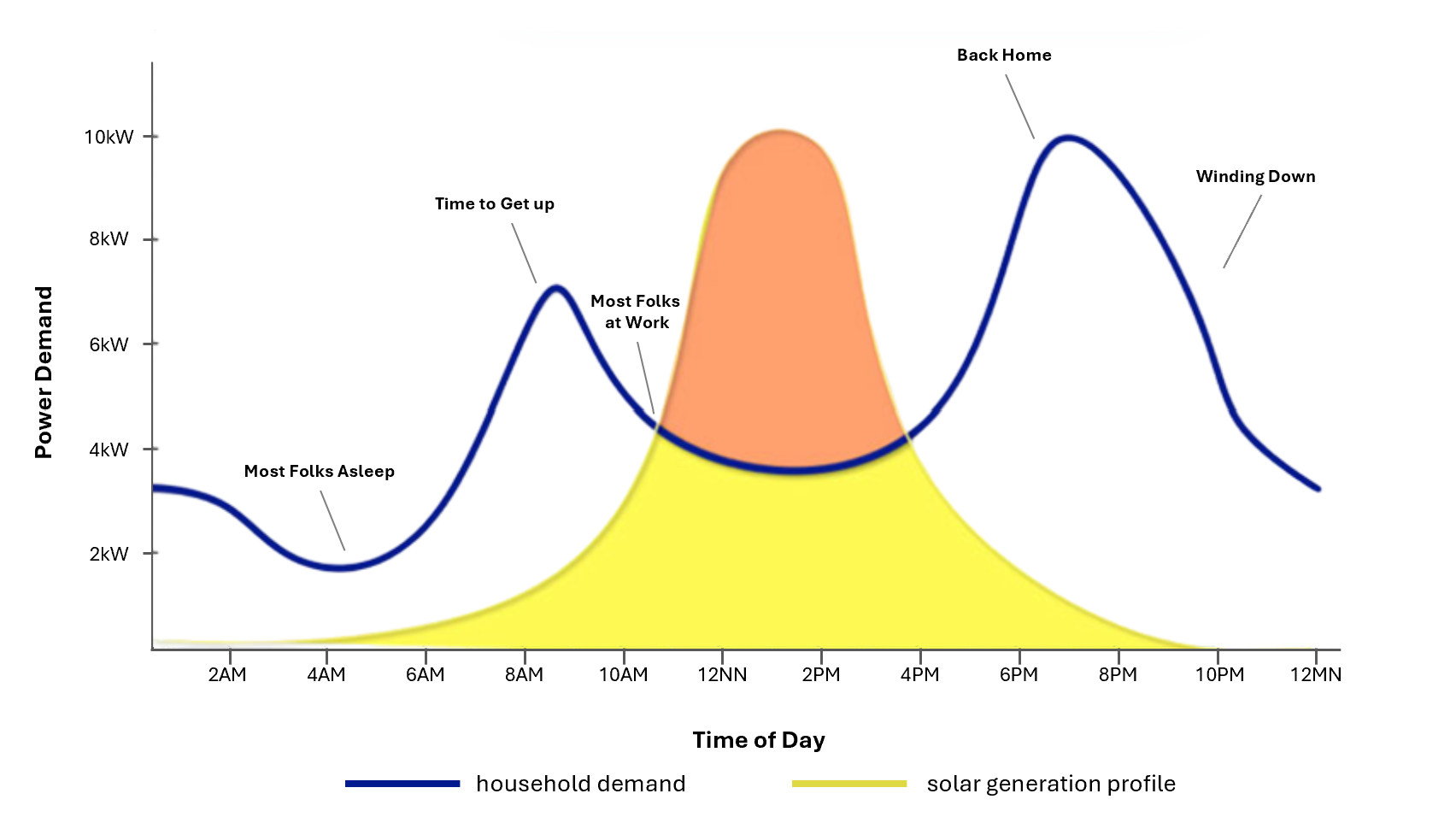For the public, it means safe, affordable power without emissions or meltdowns. For investors, it’s a scalable platform with faster development cycles and exposure to a multi-trillion-dollar market. For policymakers, it delivers energy security, climate resilience, and infrastructure that can be deployed anywhere. In a field long defined by billion-dollar science projects, FRC makes fusion behave like a product that could scale like solar and software.
From Fear to Possibility
When most people hear the word nuclear, what springs to mind isn’t clean energy, it’s crisis. The shadow of Chernobyl and Fukushima looms large, and the Cold War etched into global memory with the terrifying spectre of mutually assured destruction. For decades, nuclear came to represent danger, disaster, and destruction, a technology we feared more than we embraced.
But buried beneath that legacy lies a different kind of nuclear — one that doesn't split atoms but fuses them. Fusion offers abundant, safe, and clean energy. It’s time we separate fear from potential, and take a fresh look at the technology that powers the Sun.
Chemical Reaction
The concept is simple: take two light atoms, typically isotopes (atoms with a different number of neutrons) of hydrogen like deuterium and tritium and fuse them together under extreme pressure and heat. International Atomic Energy Agency (IAEA) explains that fusion releases four times more energy per unit of fuel than fission, and over four million times more than oil. It's also the same process that powers the Sun.
Fusion is especially compelling for its extraordinary energy density and minimal fuel requirement. According to Lehigh University Plasma Control Laboratory, to generate the same amount of electricity:
- A coal plant would burn ~2 million tons of coal (about 33,000 railcars)
- An oil system would use ~1.3 million tons of crude (around 10 million barrels)
- A fission reactor needs ~30 tons of uranium dioxide (1 railcar)
- A fusion reactor, by contrast, would need just 0.6 tons of deuterium, a stable hydrogen isotope that you can extract from seawater and fit in the back of a pickup truck.
Deuterium isn’t just compact, it’s globally accessible and effectively limitless. Fusion also avoids long-lived radioactive waste and meltdown risk. It works in all climates, on all grids, and can offer stable, clean baseload power for decades to come.
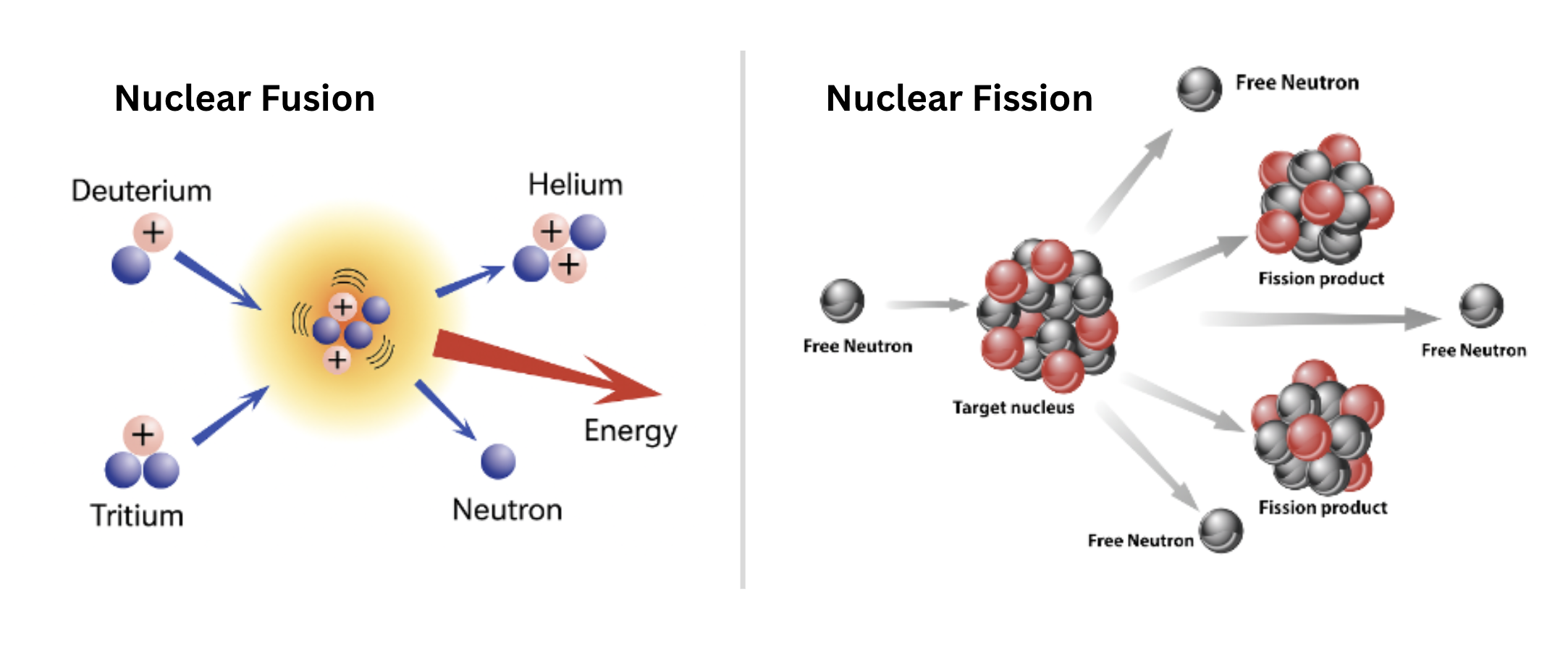
Why It’s So Hard?
Since the mid-20th century, scientists have sought to recreate the energy of the stars here on Earth. The tokamak (a magnetic reactor developed in the Soviet Union) emerged as the most studied approach, using powerful magnetic fields to confine plasma (charged cloud of electrons and ions) in a toroidal (doughnut) shape. Meanwhile, researchers in Europe and the U.S. pursued alternative designs like the stellarator, which offers enhanced plasma stability through complex, twisted magnetic geometries, though at the cost of greater engineering complexity.
To achieve fusion, we must heat plasma to over 150 million degrees Celsius (ten times hotter than the Sun’s core) and confine it using magnetic fields or extreme compression. That’s a material, energy, and systems challenge unlike any other, this is the core technical challenge fusion teams face.
A Turning Point
After decades of theoretical work and public investment, the centre of gravity is shifting from slow, state-led experiments to fast-moving, privately funded engineering teams. In this new era of atomic engineering, fusion has transformed into a young and rapidly growing industry.
As of year 2025, there are over 55 private fusion companies up from 45 last year (Fusion Industry Association 2025 Report). Over $9.8 billion has been raised by startups driven by the urgent need for clean, scalable energy, especially as generative AI places unprecedented strain on electricity grids.
Increasingly, Big Tech is stepping in both as investor and customer. Cloud giants and chipmakers, facing enormous energy requirements, are channelling capital into next-generation energy sources. Companies like Microsoft, Amazon, and Google are backing fusion startups either through corporate venture arms or power purchase agreements (PPAs) in anticipation of scalable, 24/7 carbon-free energy.
For these firms, fusion is a critical enabler of the post-Gen-AI world they are building. (Source: How Google, Microsoft and Amazon are Racing to Solve the AI Energy Crisis by CNBC)
The convergence of deep tech and deep pockets is accelerating timeline. Many of these firms aim to operate commercially viable fusion pilot plants between 2030 and 2035, signaling real momentum toward making grid-ready fusion a reality.

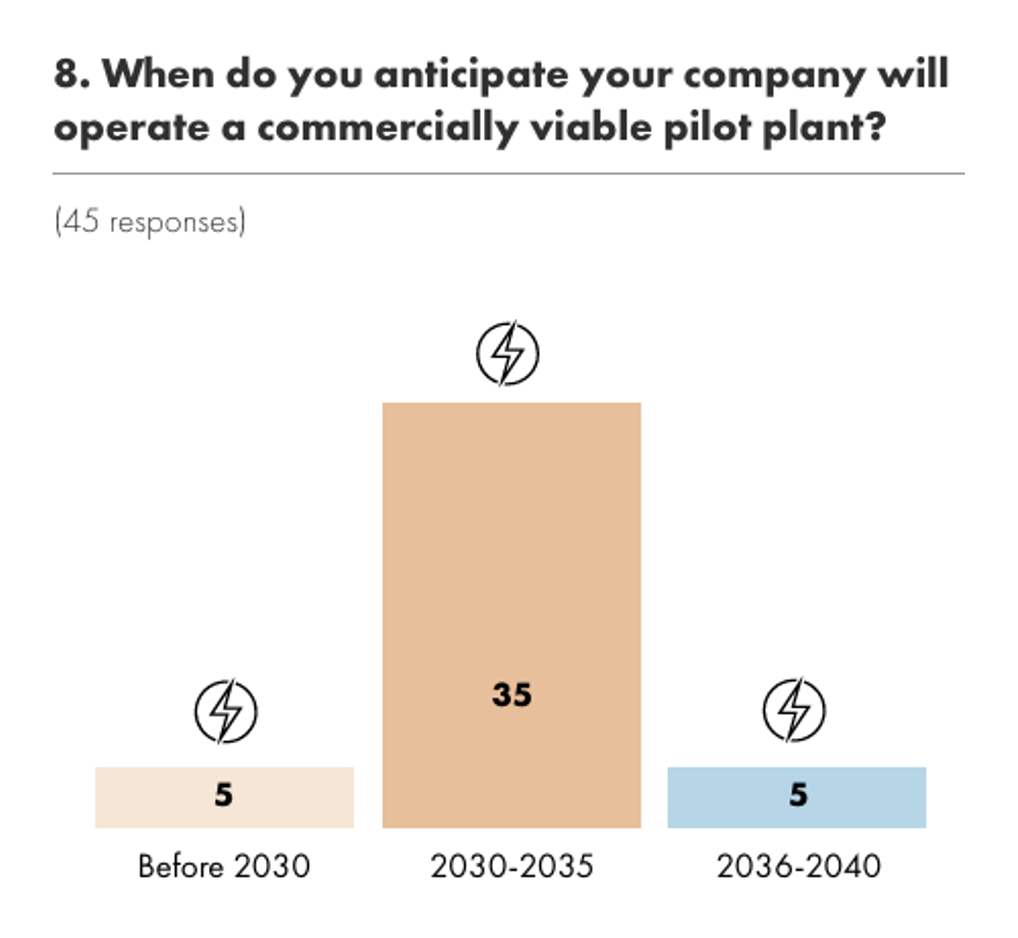
Why now? Because the enabling technologies have matured:
- High-temperature superconducting magnets make stronger, smaller reactors feasible
- AI-driven simulation accelerates plasma physics and reactor design iterations
- Additive manufacturing shrinks time-to-build
- Energy markets are desperate for reliable, clean baseload alternatives
Private sector fusion players fall into a few major technical categories:
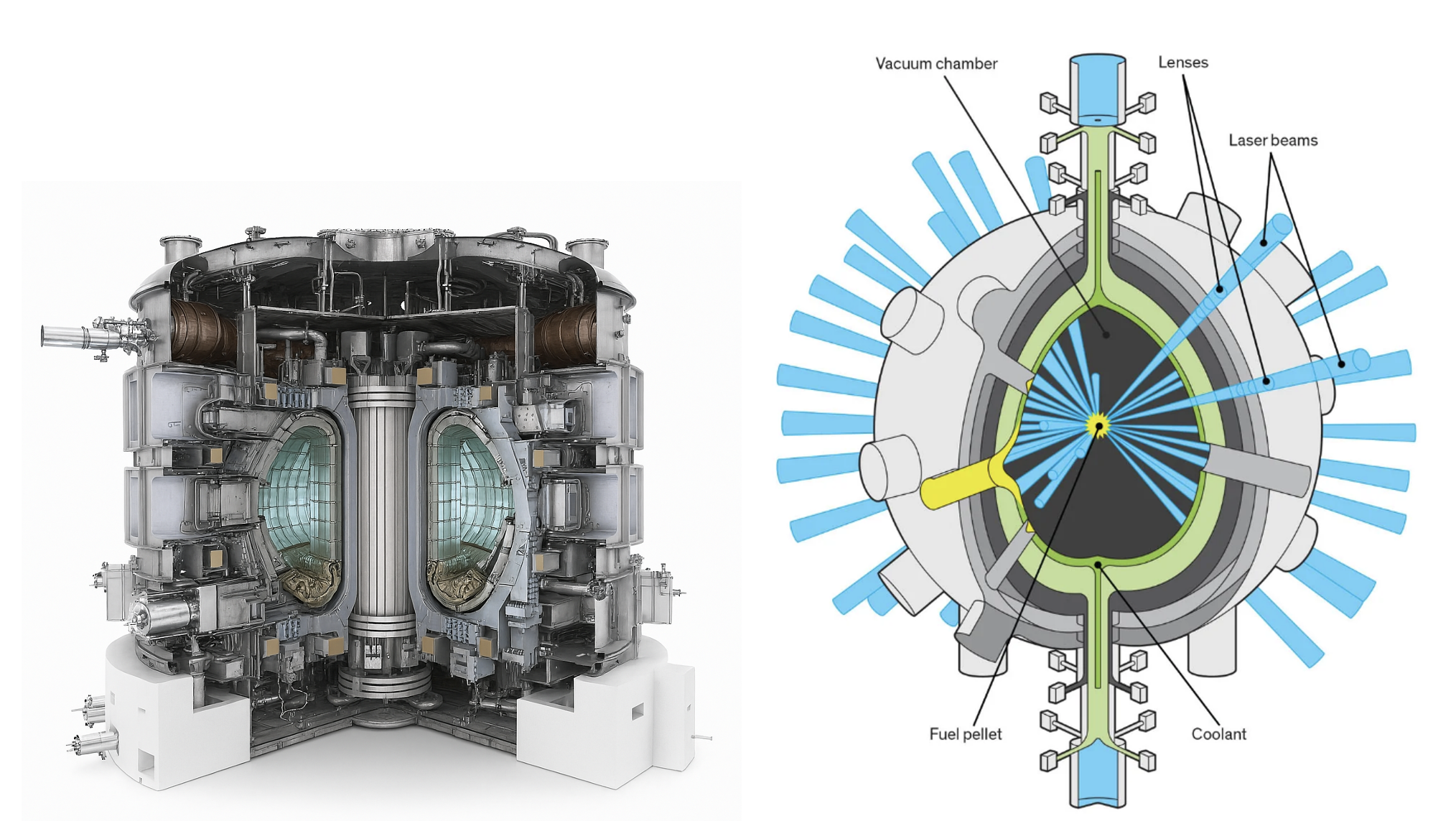
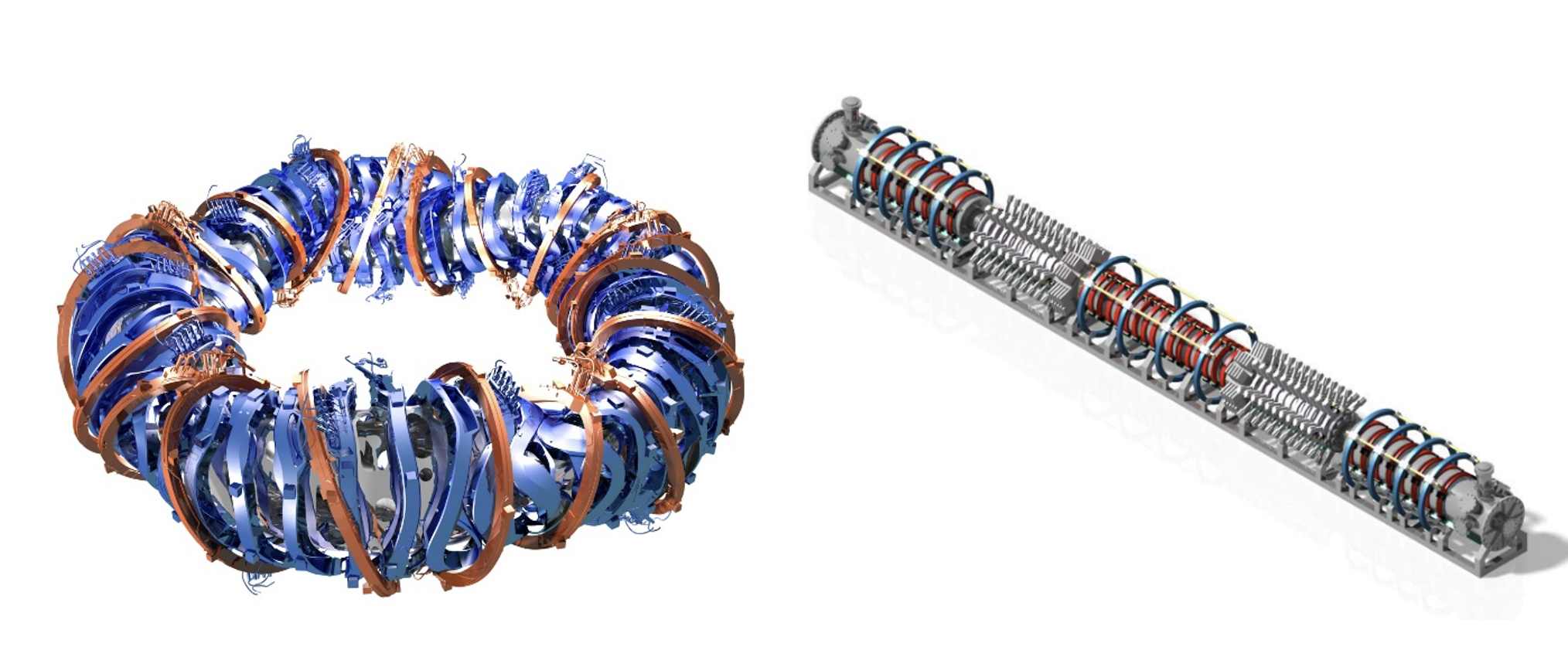
Why Field-Reversed Configuration Could Be Fusion’s Breakout Architecture
Field-Reversed Configuration (FRC) is not just another fusion concept, it is a clean-sheet reimagining of what fusion technology must become to succeed outside the lab: compact, fast to iterate, and inherently scalable. In contrast, the International Thermonuclear Experimental Reactor (ITER), a global megaproject based on the tokamak design, embodies the traditional path: a toroidal (doughnut-shaped) device sprawling over the area of several football fields, requiring tens of billions of dollars, over two decades of construction, and vast multinational coordination just to produce its first plasma.
Where ITER depends on continuous magnetic confinement using massive superconducting coils and a central solenoid cooled to cryogenic temperatures, FRCs take a fundamentally different approach. They confine plasma in a linear geometry that forms a naturally occurring, self-stabilizing "smoke ring" (a pulsed, high-beta plasma toroid without the need for central magnet structures).
This architectural simplicity matters. FRCs avoid:
- Central solenoids, reducing structural complexity.
- Superconducting magnets, removing the need for cryogenic cooling infrastructure.
- Continuous operation assumptions, allowing for modular, pulsed systems that are easier to test and iterate.
As a result, FRC-based systems can be built orders of magnitude faster and cheaper, with shorter development cycles that more closely resemble agile hardware startups than slow-moving national labs. They hold promise not only for eventual power plants, but for earlier commercial applications such as fusion neutron sources and medical isotope production. These are opportunities far outside ITER’s reach.
But the elegance of FRC is not just technical, it’s strategic. It enables modular development, mobile deployment, and a clear path to manufacturing at scale. While legacy programs chase singular breakthroughs, FRC-based ventures like HHMAX, TAE Technologies, and Helion are building platform-scale solutions: repeatable fusion units designed for rapid deployment across industries and geographies.
These are not monuments to physics, they are tools for real-world decarbonisation.
Why FRC Might Win:
- Compact, CapEx-light design – minimal infrastructure, faster builds.
- Reduced regulatory burden – avoids handling radioactive tritium.
- Modular and upgradable – suited for rapid iteration and future fuel upgrades.
Field-Reversed Configuration (FRC) systems achieve much higher power density than conventional fusion approaches due to their high-beta operation, which is a state where the pressure of the plasma (the hot, ionized fuel) is comparable to or even exceeds the pressure of the magnetic fields confining it. This enables more energy output in a smaller, simpler reactor design.
Crucially, FRC systems start with deuterium–deuterium (D–D) fusion, a fuel mix that is widely available and doesn’t require the use of tritium, a radioactive and tightly regulated isotope used in most tokamak designs. This sidesteps major regulatory, handling, and sourcing challenges, making it easier and faster to deploy these systems commercially.
As D–D fusion reactions proceed, they naturally produce helium-3 (He³), which is a rare and valuable fusion fuel. This creates a self-reinforcing fuel pathway: over time, the system can evolve to use deuterium–helium-3 (D–He³) fusion, which is aneutronic, meaning it produces very few neutrons and virtually no long-lived radioactive waste. This unlocks a pathway to even cleaner, higher-efficiency fusion reactors in future generations.
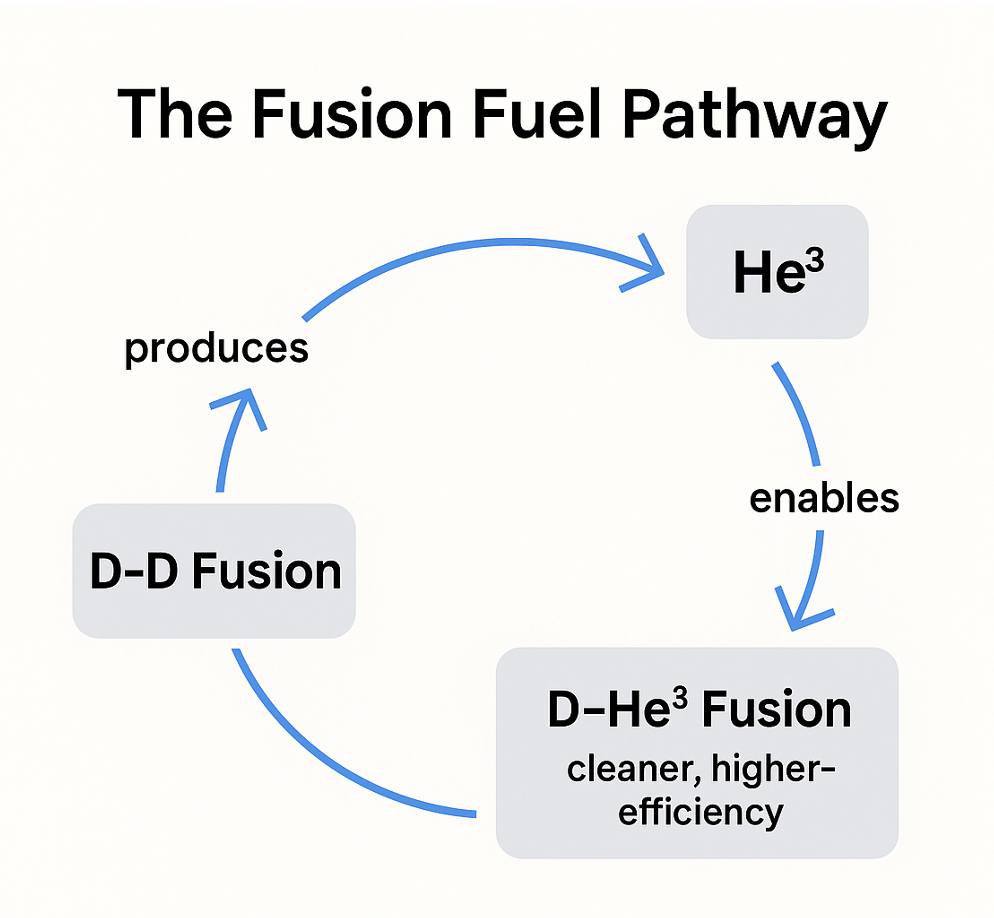
For the public, it means safe, affordable power without emissions or meltdowns. For investors, it’s a scalable platform with faster development cycles and exposure to a multi-trillion-dollar market. For policymakers, it delivers energy security, climate resilience, and infrastructure that can be deployed anywhere. In a field long defined by billion-dollar science projects, FRC makes fusion behave like a product that could scale like solar and software.
Final Thought – If Fusion Succeeds, Everything Changes
If fusion succeeds, the consequences will be nothing short of transformational. Clean, near-limitless energy could reshape energy markets and reduce dependence on carbon-intensive sources. Enabling electrification across the board, with technologies such as our own Earth Fund portfolio company, PlasmaLeap Technologies, which create valuable products from electricity viable.
But this future won’t arrive by default. It must be built based on what we do now. It requires bold capital, long-horizon thinking, and policy that accelerates innovation rather than obstructs it. Fortunately, the private fusion frontier, from established leaders to breakout players, is moving faster than ever.
We are, quite literally, on the cusp of lighting a second Sun on Earth — not for destruction, but for abundance.
The next few years will show whether fusion's moment has truly arrived, but for the first time, all the pieces are on the table.


